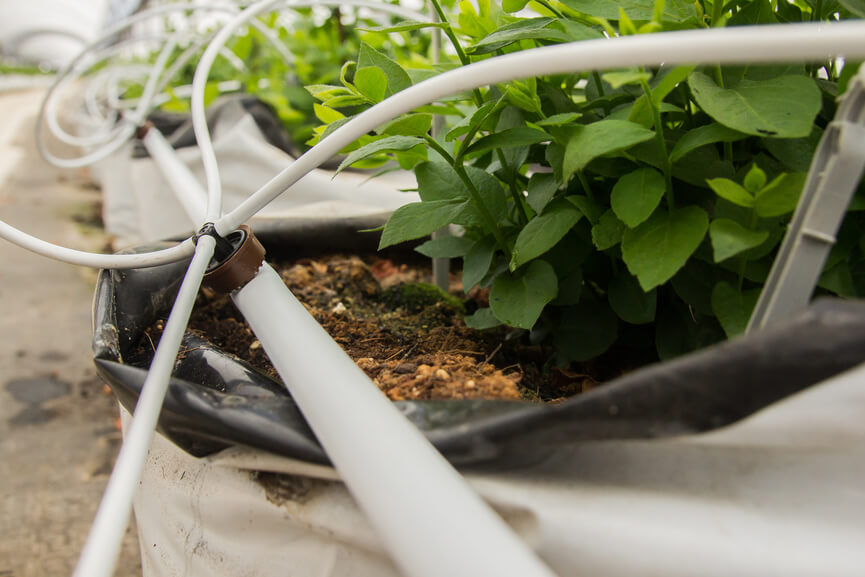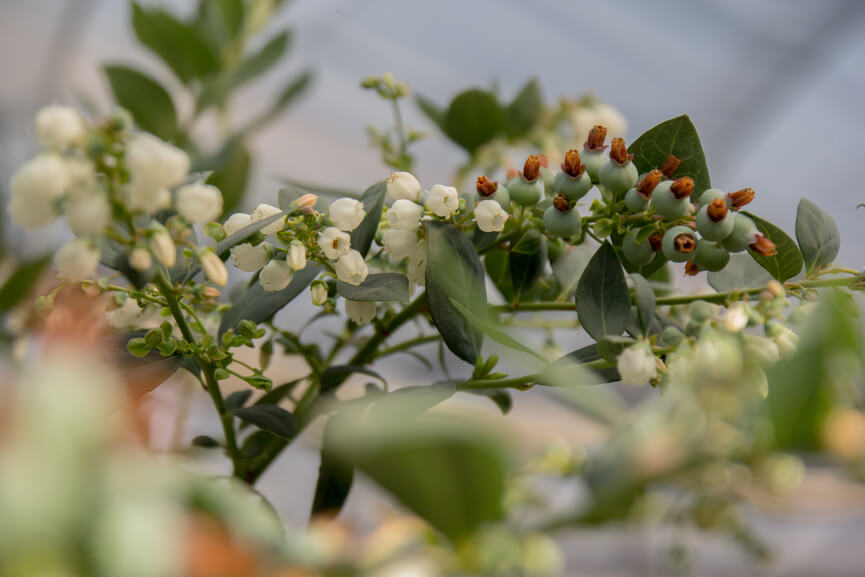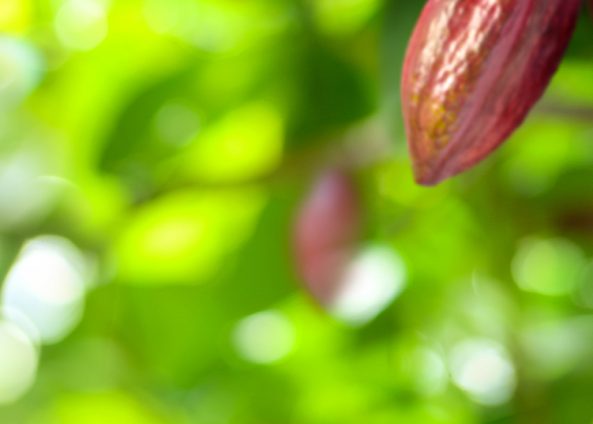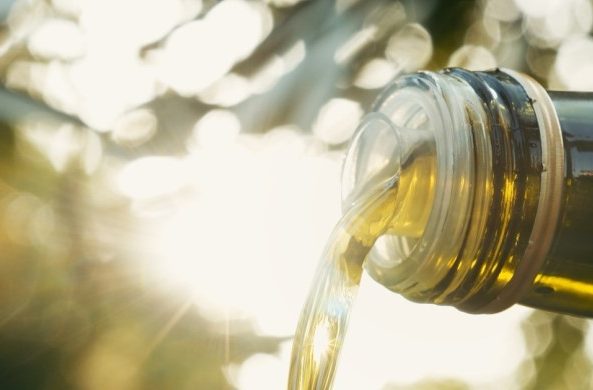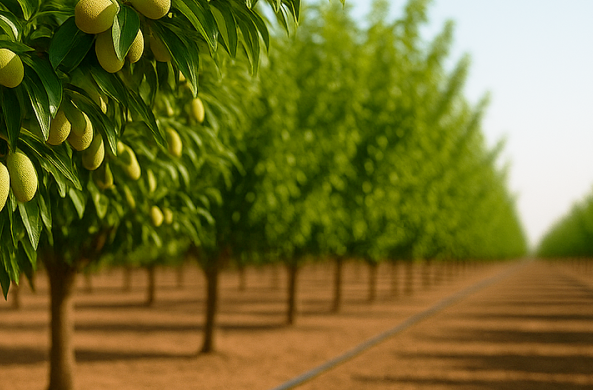
Expert Guide to Growing Blueberries in Soil
INTRODUCTION
Rivulis has been a big supporter of blueberry farmers, understanding the hurdles they face when growing blueberries. There are around 150 different types of blueberries, which can be divided into four main groups based on where they like to grow best. Northern highbush blueberries do well in the northern US and Canada, while Southern highbush kinds prefer milder weather. Rabbiteye blueberries thrive in the Southeast and Southern Hemisphere, and Lowbush varieties are usually seen in the wild.
Most commercially grown blueberries belong to the highbush species, often resulting from crossbreeding between Northern and Southern varieties. Mixing different types of blueberry plants has created new kinds that stay green all year and don’t go dormant in places with mild winters. These special varieties don’t need a cold spell to start growing buds. The blueberries you usually see in stores are mostly from the highbush species, and a lot of them are mixes of northern and southern types.
All blueberries belong to the genus Vaccinium. This genus also includes cranberries, lingonberries, and bilberries.
SOIL
Managing soil pH is crucial for the entire life of a blueberry plant. Blueberry plants grow better, absorb more nutrients, and produce more fruit when they’re in acidic soil with a pH below 5.0. If the pH is higher, the plant might not get enough micronutrients. One way to make the soil more acidic is by adding elemental sulfur. This used to be common before drip irrigation became popular. Another great method is to use N-NH4 fertilizers through fertigation to lower the soil pH effectively. Blueberries are also really picky about having enough oxygen in the soil. To avoid waterlogging, you can plant them on raised beds and make sure you water them at the right time.
PLANTING
Blueberries are usually planted 3-4 meters (10-13ft) between rows. For less vigorous varieties, it’s best to plant them 0.8 meters (2.5ft) apart, while the more energetic ones do well with 1.2-1.5 meters (4-5ft) between plants. After planting, it’s common to put mulch along the row to keep the roots cool, damp, and weed-free. These days, using a breathable fabric for weed control is the norm.
A 5-10 cm (2-4 in) layer of mulch can boost plant growth and yield by protecting roots from extreme temperatures, adding organic material, and holding onto moisture. It’s also great for keeping those pesky weeds in check. You can use peat moss, shredded leaves, straw, wood chips, or sawdust for mulch. If you choose sawdust or something else with a high C/N ratio, make sure to up the nitrogen or mix in 1 kg (2.2lb) of ammonium sulfate per 20 kg (44lb) of mulch. It’s a good idea to reapply mulch every 1-2 years.
Blueberries are sensitive to how much water they get. To keep them happy, it’s best to use well-drained soil and drip irrigation. This way, you can also make sure the pH level around their roots stays just right.
With pulse irrigation, less water and nutrients leach beneath the roost zone, and the soil is saturated for shorter periods.
A good way to handle watering is by using the crop coefficient (Kc) method. Local weather stations measure daily evapotranspiration (ET) using the Penman-Monteith equation. By multiplying the Penman-Monteith value with the crop coefficient, you can figure out how much water your blueberries need each day.
Table: Irrigation timing and frequency
It’s been found that watering blueberries on just one side can disrupt their growth and fruit production a lot (Source: D. Byrla, USDA, Abbott & Gough 1986). So, it’s better to use two drip lines to make sure water and nutrients are spread evenly across the roots. To figure out a good watering schedule, you can use tensiometers. Check how much water your soil can hold between being fully soaked and pretty dry. Make sure it doesn’t go below 30-40 cbar (kPa=cbar) at any point. Different soils can hold different amounts of water. If you want more information, discuss it with an agronomist. Also, remember that a bad irrigation system can flood plants with too much water too fast, leading to water and nutrient loss, and sad plants.
Rivulis has a range of solutions for soil-grown blueberries for driplines, sprinklers, fertigation, cooling, and frost protection.
Dripline options include the D5000 for reliable efficiency and the Amnon for precision. The C8300 or C9300 (dependent on the flow rate) using the C4300 controller. The Super 10 sprinkler is an extra-range ball-drive sprinkler known for its compact, sturdy, closed ball engine and easy service bayonet. It has an optional clow regulator and high-water distribution.
The Flipper is the most economical choice for frost protection, and it spreads water in a long and narrow strip, saving up to 70% water when compared to conventional overhead systems. It has an optional flow regulator for long rows and is safe to operate under frost conditions.
FERTILIZATION
Blueberries have shallow roots, with most of their important roots located around 30 cm (12in) deep. This highlights the importance of carefully planning and managing irrigation to avoid nutrient leaching, which not only wastes money but also harms the environment. For fertilization, blueberries favor N-NH4. This form of nitrogen reduces the soil pH at the root zone.
Recommended values are based on leaf tissue analysis. Sample of most recent fully expanded leaves:
|
Nutrient |
Deficient below |
Sufficient |
Excessive above |
|
Nitrogen(%N) |
1.7 |
1.76to2 |
2.5 |
|
Phosphorus(%P) |
0.07 |
0.11to0.4 |
0.8 |
|
Potassium(%K) |
0.2 |
0.41to0.7 |
0.95 |
|
Calcium(%Ca) |
0.2 |
0.41to0.8 |
1 |
|
Magnesium(%M) |
0.1 |
0.13to0.25 |
0.45 |
|
Sulfur(%S) |
0.07 |
0.11to0.16 |
0.2 |
|
Manganese(ppm Mn) |
10 |
31to350 |
450 |
|
Boron(ppmB) |
20 |
31to80 |
150 |
|
Iron(ppmFe) |
50 |
61to200 |
400 |
|
Zink(ppmZn) |
4 |
8to 30 |
80 |
|
Copper(ppmCu) |
2 |
5to 15 |
50 |
(Source: Dr.Bernadine C.Strik, Professor, Dept. Horticulture, Oregon State University)
The smart use of water-soluble fertilizers (fertigation) can provide higher yields than granulated fertilizers that are applied dry (*accumulative yield of 5 years):
|
Fertilizer |
Soil pH |
Leaf N (%)Z |
Yield (tons/acre) (tons/ha)y |
|
|
No fertilizer |
6.2 ax |
1.29 d |
15 c (37) |
53% |
|
Granular fertilizer |
||||
|
Ammonium sulfate |
5.1 c |
1.67 bc |
22 b (54.3) |
78% |
|
Urea |
5.6 b |
1.60 c |
24 ab (59.3) |
|
|
Fertigation |
||||
|
Ammonium sulfate |
5.3 c |
1.78 a |
28 a (69.2) |
100% |
|
Urea |
5.8 b |
1.65 b |
25 ab (61.8) |
|
|
Urea sulfuric acid |
5.6 b |
1.70 ab |
27 a (66.7) |
|
|
zLeaf N concentrations are considered normal at 1.7% to 2.00%, below normal at 1.50% to 1.75%, and deficient at <1.50% (Hart et al., 2006) Y |
.-1 | |||
z Leaf N concentrations are considered normal at 1.7% to 2.00%, below normal at 1.50% to 1.75%, and
deficient at <1.50% (Hart et al., 2006)
Y Total cumulative yield during the first 5 years of fruit production (2008-12); 1 ton/acre = 2.2417 Mg.ha-1.
x Means followed by a different letter within a column are significantly different at P<0.05, according to
Tukey’ honestly significant difference test.
(Source: David R. Bryla and BernadineC. Strik, USDA & OregonState University)
These are just general guidelines that can vary a lot depending on factors like soil type, blueberry variety, climate conditions, and more. If you need more specific advice, feel free to reach out to our team for further consultation.
POLLINATION AND HARVEST TIMING
Some blueberry varieties like Brigitta, Spartan, Chippewa, Polaris, and Toro require cross-pollination, while others like Bluecrop, Legacy, Jersey, Liberty, Elliott, and Aurora benefit from it. Varieties like Duke, Draper, Bluejay, Nelson, and Rubel don’t need cross-pollination at all.
To promote cross-pollination, plant two different varieties that bloom at the same time in a 1:9 ratio of the pollinator variety. Bring in 2-5 hives of honeybees per acre, depending on the field’s type and age.
Blueberries aren’t the top choice for honeybees because they don’t offer a lot of nectar. It’s best to introduce bees once the crop begins to bloom so they focus on the blueberries. Move the bees into the field when it’s at 5%-20% bloom as blueberry flowers lose viability after 3 days. Some varieties like Jersey may not be as appealing to bees, but bumble bees are great pollinators for blueberries as they work at lower temperatures and transfer pollen efficiently.
PRUNING
When it comes to blueberry plants, make sure they’re a good height for picking fruit easily. Pruning is key for getting more flowers and keeping pests in check, so trim out any branches that are getting in each other’s way. Blueberries grow fruit on branches that are two years old, so it’s smart to get rid of the old ones and make room for new ones every year. Aim to trim about 25%-30% of the bush and focus on cutting out the oldest branches annually.
FROST PROTECTION
Global warming is leading to unpredictable weather, including spring frosts. Research from the University of California shows that freeze damage causes more economic losses in the United States than any other weather problem.
Certain growth stages of blueberries can handle cold weather well. For example, when the leaf buds start to sprout, the plants can tough it out at temperatures as low as -12 ˚C. However, once the fruit sets, frost damage can kick in at anything below 0˚C. Frost can seriously tamper with yields and even harm plants so badly that next year’s crop suffers too. Sprinklers are often the go-to for protecting blueberries from frost—it’s the most effective method out there.
Water Application Rate
A minimum of 3.0 mm/h (7.5 in/hr.) is required to protect plants at temperatures as low as -3 ˚C.
A further 0.5 mm/h (1.25in/hr.) is required for every additional degree of temperature drop.
|
Degree |
Water application rate (mm/h) |
Water application |
| -3 | 3.0 | 7.6 |
| -4 | 3.5 | 8.9 |
| -5 | 4.0 | 10.2 |
| -6 | 4.5 | 11.4 |
| -7 | 5.0 | 12.7 |
| -8 | 5.5 | 14.0 |
Overhead sprinkler irrigation is a very common practice in frost protection. Overhead irrigation provides excellent frost protection in temperatures of -7 °C (-44Farenheit) and lower if the application rates are sufficient and the application is uniform.
CONCLUSION
Cultivating thriving blueberry crops demands a nuanced understanding of their unique needs across various stages of growth. Rivulis’ commitment to supporting farmers through tailored irrigation solutions underscores the importance of precision and efficiency in blueberry cultivation. By navigating soil management, irrigation techniques, fertilization, pollination, and protection against environmental challenges like frost, growers can optimize yields and foster sustainable practices. With continuous adaptation and expert guidance, the journey from blueberry planting to harvest remains fruitful and rewarding for farmers worldwide.


